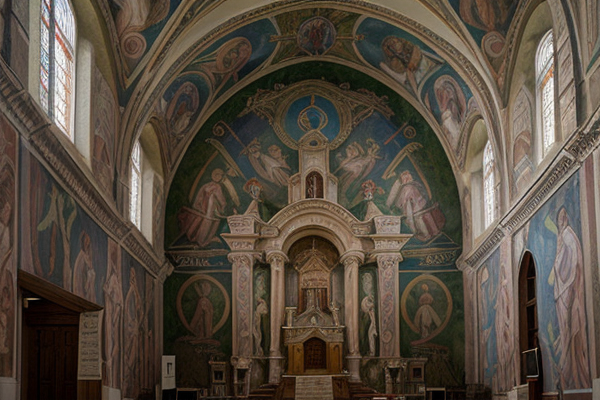 In an unprecedented and groundbreaking initiative, scientists and conservators at the National Restoration Laboratory in Italy have successfully deployed a unique, eco-friendly solution to save the exquisite church frescoes from the 14th century, which were severely deteriorating. The team, in collaboration with a Swiss microbiologist, has introduced a strain of harmless, non-pathogenic bacteria that is capable of consuming and neutralizing the harmful pollutants causing the decay of these priceless artworks.
In an unprecedented and groundbreaking initiative, scientists and conservators at the National Restoration Laboratory in Italy have successfully deployed a unique, eco-friendly solution to save the exquisite church frescoes from the 14th century, which were severely deteriorating. The team, in collaboration with a Swiss microbiologist, has introduced a strain of harmless, non-pathogenic bacteria that is capable of consuming and neutralizing the harmful pollutants causing the decay of these priceless artworks.
The bacteria, specifically selected for its ability to break down pollutants, was applied gently to the surface of the frescoes using a special spray. This innovative technique aims to reverse the damage inflicted by air pollution and humidity over the centuries, thus prolonging the lifespan of the frescoes and preserving them for future generations to appreciate.
The project, funded by the EU and the local diocese, is the result of years of research and collaboration between artists, microbiologists, and conservation experts. The team’s approach is rooted in the philosophy of minimally invasive methods, ensuring the preservation of the original artistic integrity of the frescoes while restoring their beauty.
The trial has been conducted on a small section of the frescoes, and the initial results are promising. If successful, this breakthrough technique could potentially revolutionize the way we preserve and protect historic artworks around the world, making conservation efforts less intrusive and more environmentally friendly.
The church where the frescoes are located has welcomed this innovative approach, expressing hope that this project will not only save these precious works of art but also serve as an example of collaboration between science, art, and history. The public is eagerly awaiting updates on the project’s progress, as well as the possibility of visiting the church to witness this remarkable effort firsthand.